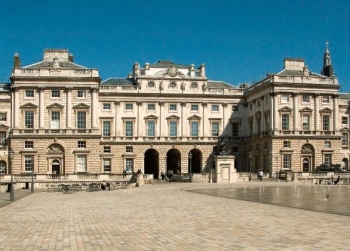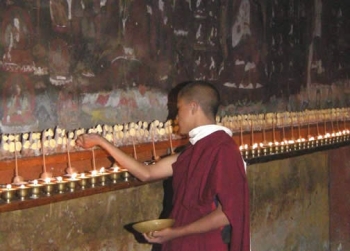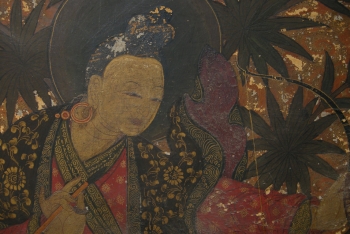This month, the Robert H. N. Ho Family Foundation not only hosted the International Buddhist Film Festival in the British capital but also donated £2.5 million to various institutes to establish a new Masters program for Buddhist art. The Foundation additionally sponsored the Buddhist Art Forum, which was held at the Courtauld Institute of Art from the 11th to 14th of April. Over four days and three receptions at the Victoria and Albert Museum, the British Museum, and the Courtauld, a quartet of different themes were presented by a worldwide selection of scholars and conservators. Some names included but were not restricted to: Matthew Kapstein, Francesca Tarocco, Roderick Whitfield, Juhyung Rhi, Kate Crosby, Susan Whitfield, and celebrity monk Matthieu Ricard.
The first day was all about defining Buddhist art, and whether the term was historically valid at all. Buddhism began as an ascetic tradition teaching the ephemerality of the universe. What use did it have for art? Were its statues, images, and icons originally perceived as art? On the second day, we explored the creation and function of Buddhist art. The third day oversaw an in-depth examination into the conservation of Buddhist art. The fourth and final day explored the role of Buddhist art in the contemporary world, ranging from photography to the Buddhist imaginary in American art. This was the topic of Alexandra Munroe’s talk, which covered an entire spectrum of contemporary art phenomena from Fenollosa to the avant-garde movement. In my opinion, the fourth day was slightly less academic than the other three, because it’s not always easy to follow things that are happening right under our noses – like the constantly shifting landscape of contemporary Buddhist art.
The conference was very comprehensive in its approach. It is a rare opportunity to listen to papers about the ritual function of Central Asian cave art, and then to enjoy a visually stunning presentation about Buddhist pilgrimage in the Eastern Himalayas. Some talks were about the specifications of a single piece of artwork, such as John Clarke and Diana Heath’s presentation of a sculpture of Virupa and its place in

















